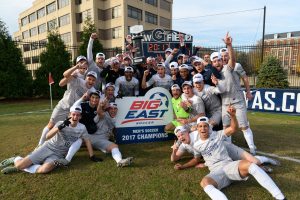Since graduating Georgetown, Anne Dias (SFS ’92) has risen to the top of her field of finance and has made her name as one of the few prominent women to run her own hedge fund. Now, she seeks to bring her industry knowledge and experiences to a new generation of students through her class, Hedge Fund Investing.
For three hours every Thursday, around 35 students in the McDonough School of Business’s MBA program have unparalleled access to some of the most prominent names in the world of finance and investing. Through the MBA course offered during the fall semester, Dias teaches the history of and strategies behind hedge fund investing along with Michael Barry, Georgetown’s Chief Investment Officer (CIO), and a rotating roster of expert guest speakers.
Hedge funds are a type of investment fund that manages a large pool of capital, or financial wealth used to run and grow a business, from outside investors. Through a complicated investment portfolio and careful risk management, hedge funds seek to aggressively maximize investor returns while reducing risk.
Dias started her own fund, Aragon Global Management, in 2001, with start-up capital from hedge fund titan Julian Robertson. In 2011, Aragon returned its outside investments, and Dias oversaw its conversion into a private family office.
The transition gave Dias the opportunity to pursue an intellectual project of teaching. For Dias, Georgetown was a natural fit. At that time, the MSB was offering a course on private equity investing but not hedge funds. So, when University President John DeGioia met with Dias during a visit to Chicago following the conversion of Aragon to a family fund, she suggested the idea of a hedge fund strategies course.
“I thought it would be a really great intellectual adventure to put everything I learned in a package,” Dias said. “Georgetown embodies so many things that I value in the investment business. It’s an international and inquisitive community that [seeks to] connect the dots between very disparate subject matters: international relations, the macroeconomy, and companies.”
The course, now in its third year, is currently co-taught by Dias and Barry. While she brings experience from managing an active fund, Barry’s position as the university CIO offers an added perspective from an endowment angle.
“Professor Barry has a bird’s eye view of many of these strategies we discuss. He’s brought in great guest speakers that I would not have naturally reached out to,” Dias said.
Unlike most business classes, the Hedge Fund Strategies focuses on investing strategies as a history of thought, rather than just pure mechanics. While students are expected to learn the mechanical aspects of each class through readings beforehand, much of Dias’s lectures focus on the genesis and evolution of each investment strategy.
Dias attributes this to her background in the School of Foreign Service. “There is a genealogy of hedge funds just like there is a genealogy of political thought,” she said. “You could see the same themes and big ideas just taking place at different moments in history.”
Students then utilize these principles to analyze real world case studies. The class observes Chatham House Rules, where specific information discussed will not leave the classroom, so that Dias, guest speakers, and students can freely discuss sensitive and current issues.
Many students believe the topicality of the cases discussed is an added benefit to the course. Patrick Nadeau, an MBA exchange student from HEC Paris, said the class is about “Not just discussing problems from the nineties, but rather talking about things that are happening today as we’re trying to enter the industry.”
Students in class furthermore engage on current cases with prominent investors who rarely speak publicly. Past speakers include Ken Griffin, Dias’s ex-husband and the CEO of Citadel, and Chase Coleman of Tiger Global, a prominent technology investor, among others. For Dias and her students, each speaker brings something unique and invaluable. When asked if she had a favorite speaker, Dias laughed and said, “It’s like asking which of your children are your favorites.”
Throughout class, guest speakers offers their own insight by adding to Dias’s lecture and students’ comments. The atmosphere within the classroom is almost palpably tense. Dias walks from desk to desk, sometimes lecturing but, more often than not, pushing and questioning students until they arrive at the correct answer or a logical conclusion.
According to Erica Melito (MBA ’20), “You’re almost on the edge of your seat— [Dias] makes the class come alive. She knows everything in and out about this industry, and she pushes us to the point where we’re learning more and becoming better versions of ourselves.”
Yet, in spite of prominent women like Dias, finance remains a male dominated field. A Chartered Financial Analyst Institute (CFA) report found that women make up only roughly 18 percent of professionals in financial services— less so than any other major profession. Women working in finance, too, face higher barriers than their male counterparts. Hedge funds run by women, for instance, have a significantly harder time raising capital despite there being no statistical difference in performance.
The gender gap is also visible in business education. Only 15.8 percent of finance faculty at the top 100 business schools in the U.S. are women. At Georgetown, women make up 29 percent of MSB faculty, 30 percent of MBA students, and 19 percent of MSB board members.
For students like Melito, Dias’s class represents a refreshing and important departure from the norm. “To see a woman teaching a course in an industry that is so male dominated is really special,” she said. “As corny as it is, it’s inspiring.”
Roman Peregrino contributed to this report.
This piece was updated to correct the names of Patrick Nadeau and Chase Coleman, the name of the course, and to remove an unconfirmed statistic attributed Aragon Global Management.




